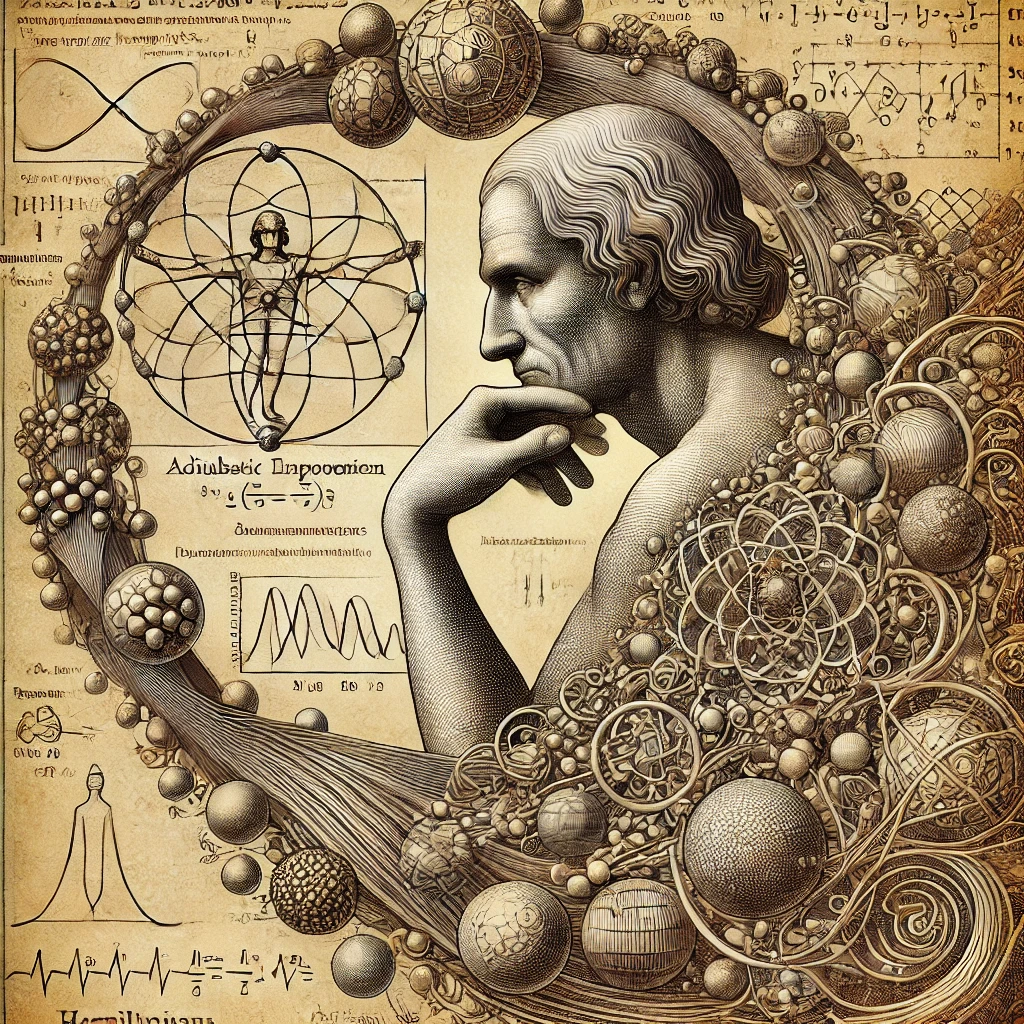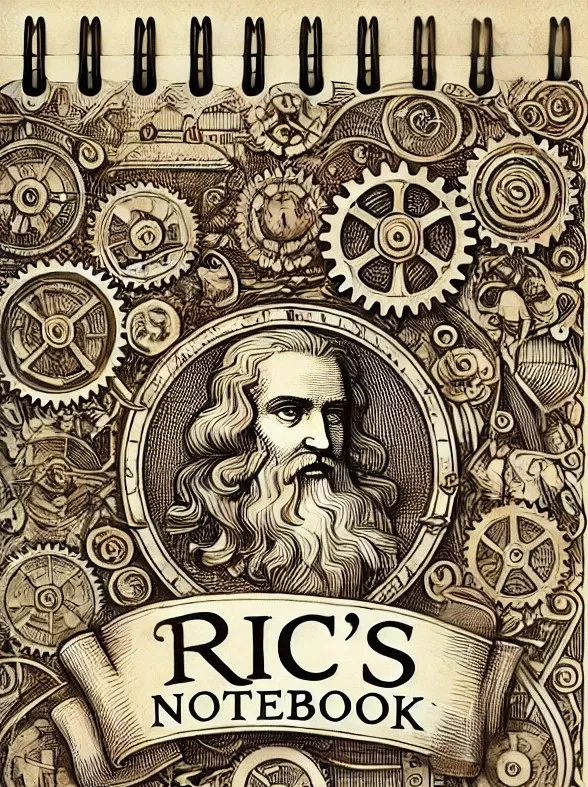
- Published on
- Authors

- Name
- ric de yuga 😄
🌌 Introduction to Adiabatic Quantum Computing (AQC)
Adiabatic Quantum Computing (AQC) is a powerful paradigm of quantum computing that transforms computational problems into the challenge of finding the lowest energy eigenstate of a specified Hamiltonian. Proposed theoretically by Edward Farhi, Jeffrey Goldstone, Sam Gutmann, and Michael Sipser in 2000, AQC harnesses the principles of quantum mechanics to tackle complex problems that are intractable for classical computers.
🔍 The Adiabatic Theorem
The foundation of AQC lies in the adiabatic theorem, first stated by Max Born and Vladimir Fock in 1928. It posits that a physical system remains in its instantaneous eigenstate if a given perturbation is acting on it slowly enough and if there is a gap between the eigenvalue and the rest of the Hamiltonian's spectrum. In the context of AQC, this principle is exploited by initializing the system in the ground state of a known, simple Hamiltonian and gradually evolving it to the problem Hamiltonian, whose ground state encodes the solution to the computational problem.
Mathematical Formulation
The adiabatic theorem can be expressed mathematically as follows:
Let
be a time-dependent Hamiltonian with instantaneous eigenstates
and eigenvalues
. If the system starts in the ground state
at
, and the evolution is slow enough, the state of the system at time
will be close to the instantaneous ground state
, up to a phase factor.
The condition for adiabaticity is often expressed as:
where
is the first excited state.
🛠 The AQC Algorithm
Initial and Problem Hamiltonians
An AQC algorithm consists of three primary components:
- Initial Hamiltonian (
): Chosen to have a known ground state that is easy to prepare. An example is a Hamiltonian that aligns all spins along a specific axis. 2. Problem Hamiltonian (
): Encodes the solution to the computational problem. This Hamiltonian is designed within the constraints of the quantum hardware. 3. Evolution Path: A smooth transition from
to
, ensuring the system remains in the ground state throughout the process.
Evolution Process
The system starts in the ground state of
and evolves adiabatically into the ground state of
. The evolution is governed by a time-dependent Hamiltonian
, which interpolates between the initial and problem Hamiltonians:
$
$
where
is a scheduling function that smoothly varies from 0 to 1 as time progresses.
Quantum Speedup
The potential quantum speedup in AQC arises from the ability to exploit quantum tunneling and quantum superposition. Quantum tunneling allows the system to traverse energy barriers more efficiently than classical methods, while quantum superposition enables the system to explore multiple solution paths simultaneously. These quantum phenomena can lead to a significant reduction in the time required to find the optimal solution compared to classical algorithms.
✨ Applications of AQC
Optimization Problems
AQC is particularly well-suited for solving optimization problems. It can be applied to a wide range of domains, including:
- Logistics: Optimizing supply chain networks, vehicle routing, and resource allocation.
- Finance: Portfolio optimization, risk management, and fraud detection.
- Machine Learning: Training deep neural networks, feature selection, and clustering.
- Graph Theory: Solving graph coloring, maximum independent set, and minimum vertex cover problems.
Case Study: Traveling Salesman Problem
The Traveling Salesman Problem (TSP) is a classic NP-hard optimization problem that can be addressed using AQC. The problem involves finding the shortest possible route that visits each city exactly once and returns to the origin city. For a TSP with
cities, the problem Hamiltonian can be constructed as:
$
$
where
is 1 if city
is visited at position
in the tour and 0 otherwise,
is the distance between cities
and
, and
and
are coefficients to balance the constraints and objective function.
Quantum Simulation
AQC can simulate quantum systems by finding the ground states of Hamiltonians that represent physical systems. This application is crucial for understanding material properties, chemical reactions, and fundamental physics phenomena. Some notable examples include:
- Material Science: Investigating superconductivity, topological materials, and quantum magnetism.
- Chemistry: Simulating molecular structures, reaction mechanisms, and catalytic processes.
- Quantum Field Theory: Studying lattice gauge theories and strongly correlated systems.
Example: Nitrogen Fixation
One compelling application of AQC is in simulating the nitrogen fixation process, which is essential for producing fertilizers. Classical methods, such as the Haber-Bosch process, require high temperatures and pressures, consuming significant energy. In contrast, AQC can potentially model the biological nitrogen fixation process, which occurs at ambient conditions, to develop more efficient industrial methods. By understanding the quantum mechanics of the nitrogenase enzyme, AQC could lead to breakthroughs in sustainable agriculture and reduced energy consumption.
🌐 Challenges in AQC
Minimum Gap Problem
As the system evolves, it may encounter an avoided crossing where the energy gap between the ground state and excited states is minimal. This "minimum gap" problem requires the system to evolve extremely slowly to maintain adiabaticity, thereby increasing the computational time. Overcoming this challenge is an active area of research, with techniques such as non-linear interpolation and reverse annealing being explored.
Noise and Decoherence
Quantum systems are susceptible to noise from their environment. As the energy gap decreases, noise can induce transitions from the ground state to excited states, disrupting the computation. Maintaining coherence over long periods is challenging with current quantum technology. Error correction schemes and fault-tolerant quantum computing are being developed to mitigate the impact of noise and decoherence.
Hardware Limitations
Implementing AQC on physical quantum devices poses several challenges. These include:
- Connectivity: Current quantum hardware has limited connectivity between qubits, restricting the types of problems that can be efficiently mapped onto the device.
- Control Precision: Accurately controlling the quantum system throughout the adiabatic evolution requires high-precision control electronics and calibration techniques.
- Scalability: Building large-scale quantum systems with a sufficient number of high-quality qubits remains a significant challenge.
🌟 Quantum Annealing: A Practical Approach
In 1998, Tadashi Kadowaki and Hidetoshi Nishimori introduced quantum annealing, a practical variant of AQC. Quantum annealing leverages quantum tunneling and dissipation to find low-energy states even in the presence of noise. While it bypasses some limitations of AQC, such as the need for strict adiabatic evolution, it does not yet provide definitive quantum speedup for practical problems.
Quantum Annealing vs. Classical Simulated Annealing
Quantum annealing differs from classical simulated annealing in several key aspects:
- Energy Landscape Exploration: Quantum annealing can explore the energy landscape through quantum tunneling, potentially finding global optima more efficiently.
- Parallelism: Quantum superposition allows for the simultaneous exploration of multiple states.
- Noise Tolerance: Quantum annealing can potentially benefit from certain types of noise, a phenomenon known as "quantum stochastic resonance."
Quantum annealing has been successfully implemented on commercial quantum processors, such as those developed by D-Wave Systems, and has shown promise in solving certain optimization problems.
🌌 Conclusion and Future Prospects
Adiabatic Quantum Computing represents a promising approach to solving complex problems by leveraging the principles of quantum mechanics. While challenges such as the minimum gap problem, noise, decoherence, and hardware limitations remain, ongoing research and advancements in quantum technology continue to push the boundaries of what AQC can achieve.
Emerging Research Directions
- Hybrid Quantum-Classical Algorithms: Combining AQC with classical optimization techniques to enhance performance and mitigate hardware limitations.
- Quantum Error Correction for AQC: Developing robust error correction schemes specifically tailored for adiabatic quantum systems.
- Novel Problem Encodings: Exploring innovative ways to map complex problems onto adiabatic quantum systems, potentially unlocking new application domains.
As we refine these methods and develop more advanced quantum systems, AQC holds the potential to revolutionize fields ranging from optimization and material science to chemistry and beyond. The ability to simulate complex quantum systems and solve intractable computational problems could lead to groundbreaking discoveries and transformative applications across various domains.
However, realizing the full potential of AQC will require a concerted effort from the scientific community, including theoretical developments, algorithmic innovations, and hardware advancements. Collaboration between quantum physicists, computer scientists, and domain experts will be crucial in addressing the challenges and unlocking the true capabilities of adiabatic quantum computing.
As we stand at the threshold of the quantum computing era, adiabatic quantum computing offers an exciting pathway to harness the power of quantum mechanics for solving some of the most complex problems facing humanity. With continued research and innovation, AQC has the potential to shape the future of computation and open up new frontiers in science and technology.
